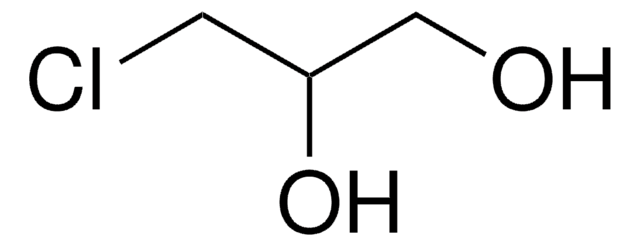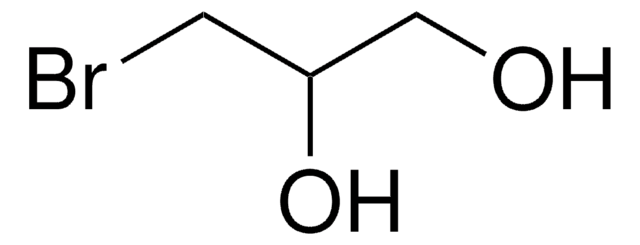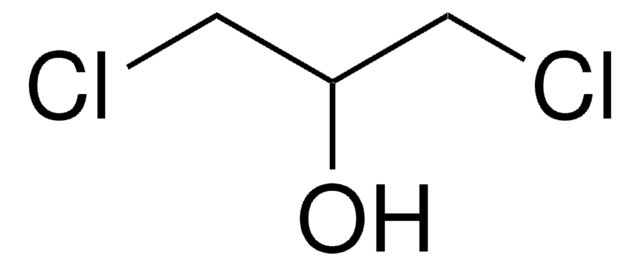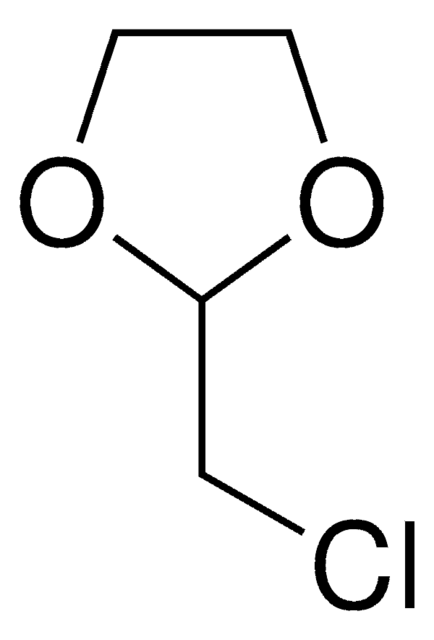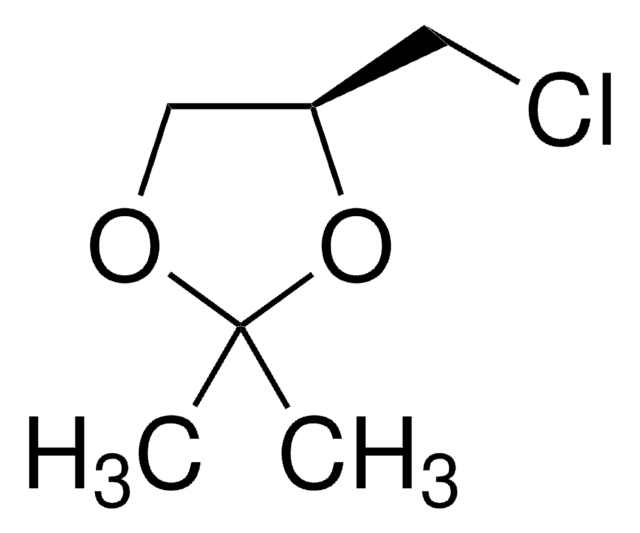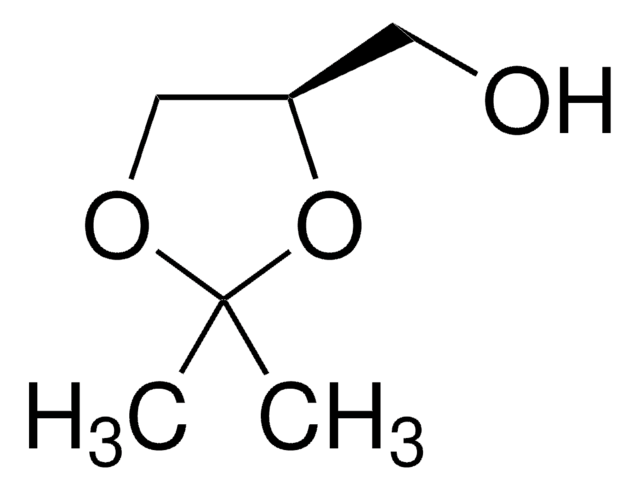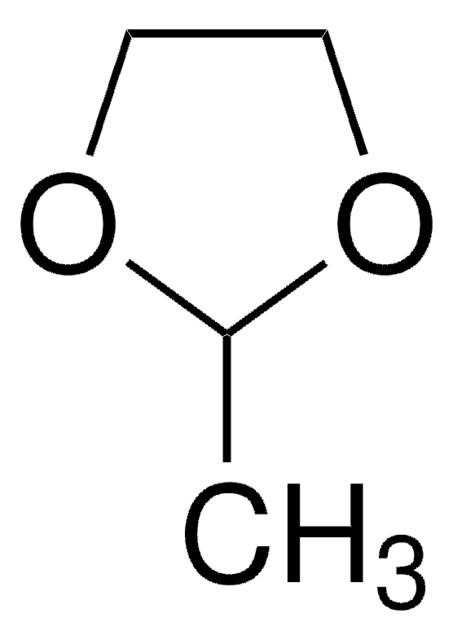All Photos(1)
About This Item
Empirical Formula (Hill Notation):
C6H11ClO2
CAS Number:
Molecular Weight:
150.60
EC Number:
MDL number:
UNSPSC Code:
12352100
PubChem Substance ID:
NACRES:
NA.22
Recommended Products
Assay
97%
refractive index
n20/D 1.434 (lit.)
bp
156-158 °C (lit.)
density
1.063 g/mL at 25 °C (lit.)
SMILES string
CC1(C)OCC(CCl)O1
InChI
1S/C6H11ClO2/c1-6(2)8-4-5(3-7)9-6/h5H,3-4H2,1-2H3
InChI key
BNPOTXLWPZOESZ-UHFFFAOYSA-N
Related Categories
General description
4-Chloromethyl-2,2-dimethyl-1,3-dioxolane is a ketal that can be synthesized by the reaction of 3-chloro-propane-1,2-diol (3-MCPD) with acetone in the presence of p-toluene sulfonic acid.
Application
4-Chloromethyl-2,2-dimethyl-1,3-dioxolane may be used in the preparation of 2,2-dimethyl-4-methylene-1,3-dioxolane via dehydrochlorination.
Signal Word
Danger
Hazard Statements
Precautionary Statements
Hazard Classifications
Acute Tox. 3 Oral - Flam. Liq. 3
Storage Class Code
3 - Flammable liquids
WGK
WGK 3
Flash Point(F)
127.9 °F - closed cup
Flash Point(C)
53.3 °C - closed cup
Personal Protective Equipment
dust mask type N95 (US), Eyeshields, Gloves
Certificates of Analysis (COA)
Search for Certificates of Analysis (COA) by entering the products Lot/Batch Number. Lot and Batch Numbers can be found on a product’s label following the words ‘Lot’ or ‘Batch’.
Already Own This Product?
Find documentation for the products that you have recently purchased in the Document Library.
Customers Also Viewed
Occurrence of 3-chloro-propane-1, 2-diol (3-MCPD) and related compounds in foods: a review.
Hamlet CG, et al.
Food Additives and Contaminants, 19(7), 619-631 (2002)
On the Cationic Polymerization of 2, 2-Dimethyl-1, 3-dioxole and 2,2-Diphenyl-1,3-dioxole.
Akkapeddi MK and Reimschuessel HK.
Macromolecules, 2(5), 827-831 (1979)
Our team of scientists has experience in all areas of research including Life Science, Material Science, Chemical Synthesis, Chromatography, Analytical and many others.
Contact Technical Service